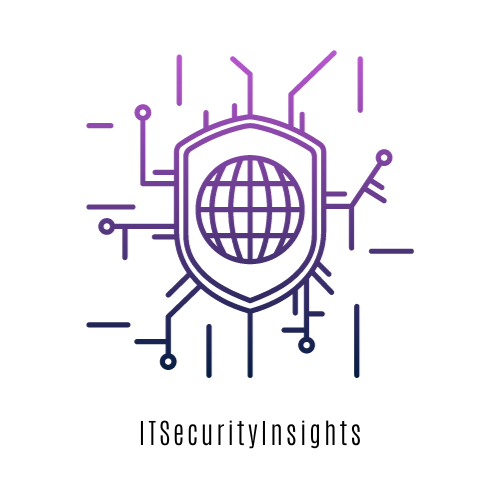Real-World Cases of Shadow IT Disasters
Shadow IT isn’t just an inconvenience—it has led to major data breaches, legal trouble, and financial losses. Let’s look at some real-world examples where a little unauthorized technology use turned into a full-blown security disaster.
1. The NASA Data Leak (2018)
- What happened? A rogue employee connected an unauthorized Raspberry Pi device to NASA’s network.
- Impact: The device was compromised, allowing hackers to exfiltrate 500 MB of critical NASA mission data, including sensitive information about the Mars Science Laboratory mission.
This wasn’t a sophisticated cyberattack—it was an unauthorized personal device plugged into the wrong network. The fact that a tiny, inexpensive Raspberry Pi led to data loss at NASA shows just how dangerous Shadow IT can be.
Lesson Learned:
- Strict network monitoring is critical. Any unknown devices on the network should raise immediate red flags.
- Zero Trust principles should be applied—never trust, always verify.
2. The Capital One Breach (2019)
- What happened? A former employee exploited an unsecured cloud storage bucket to steal sensitive data.
- Impact: Over 100 million customer records were exposed, including credit scores, social security numbers, and banking details.
The breach was caused by a misconfigured Amazon S3 storage bucket, which was left publicly accessible. The attacker, a former Amazon employee, leveraged this oversight to steal massive amounts of sensitive data.
Lesson Learned:
- Cloud security misconfigurations are one of the biggest Shadow IT risks. Employees often set up cloud instances without understanding proper security settings.
- Continuous security audits of all cloud services (approved or not) are necessary.
3. The Target POS Breach (2013)
- What happened? Hackers gained access to Target’s network via an HVAC contractor using unauthorized remote access software.
- Impact: 40 million credit card records and 70 million personal records were stolen.
This is a classic case of Shadow IT being exploited indirectly. The third-party contractor wasn’t using a properly approved remote access tool, and Target’s IT department didn’t even know about it. The attackers found the weak link and used it to compromise the entire network.
Lesson Learned:
- Third-party vendors must follow strict IT security policies.
- Unauthorized remote access software should be blocked by default.
Why Employees Use Shadow IT (and Why It’s a Problem)
Shadow IT isn’t born out of malicious intent—it’s usually a symptom of slow, restrictive IT processes. Employees don’t want to wait weeks for IT to approve a software request, so they take matters into their own hands.
However, even well-meaning employees don’t realize the risks they introduce:
- Data leaks: Unapproved applications don’t always encrypt data properly, leaving sensitive information exposed.
- Compliance violations: Many industries (finance, healthcare, government) require strict data handling policies, and unauthorized tools can lead to legal trouble.
- Increased attack surface: IT can’t protect what it doesn’t know about. Every unapproved service is another weak point for hackers to exploit.


How to Stop Shadow IT Without Slowing Down Productivity
The traditional approach to Shadow IT is to block everything, but that just forces employees to find workarounds.Instead, organizations should balance security and usability with these strategies:
1. Discover What’s Already in Use
Before you can secure Shadow IT, you need to identify it. Use security tools like:
- Cloud Access Security Brokers (CASBs) to monitor unauthorized cloud applications.
- Network monitoring tools to detect unapproved traffic.
- Endpoint security solutions to track unauthorized software installs.
2. Implement an Approved App Store
Instead of blocking everything, provide employees with a list of pre-approved tools that meet security requirements. This reduces the temptation to seek unauthorized alternatives.
3. Educate Employees on Shadow IT Risks
Most employees don’t realize they’re creating security risks. Training sessions should cover:
- The dangers of unauthorized apps.
- How attackers exploit Shadow IT.
- How to request new software through proper channels.
4. Make IT More Agile
One of the biggest reasons Shadow IT exists is because IT processes are too slow. If employees have to wait weeks for a software approval, they’ll just go rogue. Implementing a fast-track approval process for new tools can help eliminate Shadow IT at its root.
5. Enforce Security Policies Without Being Overly Restrictive
Instead of an outright ban, use security controls like:
- Data Loss Prevention (DLP): Prevent sensitive data from being uploaded to unauthorized cloud apps.
- Multi-Factor Authentication (MFA): Ensure that even if unauthorized apps are used, they require strong authentication.
- Zero Trust Security: Assume that no device or application is trustworthy by default.
Final Thoughts: Shadow IT Is Here to Stay—Manage It, Don’t Fight It
Shadow IT isn’t going away. Employees will always seek out new tools to make their jobs easier. The key isn’t to block everything—it’s to strike a balance between security and usability.
The most dangerous threats are the ones you don’t see coming. And Shadow IT is just that: a hidden, unmanaged risk lurking inside your organization. If you ignore it, you’re leaving the door wide open for data breaches, compliance violations, and cyberattacks.
You don’t need to be the IT department that says “no” to everything. But you do need to be the IT department that knows what’s happening, enforces security policies, and keeps the organization safe—even from itself.


